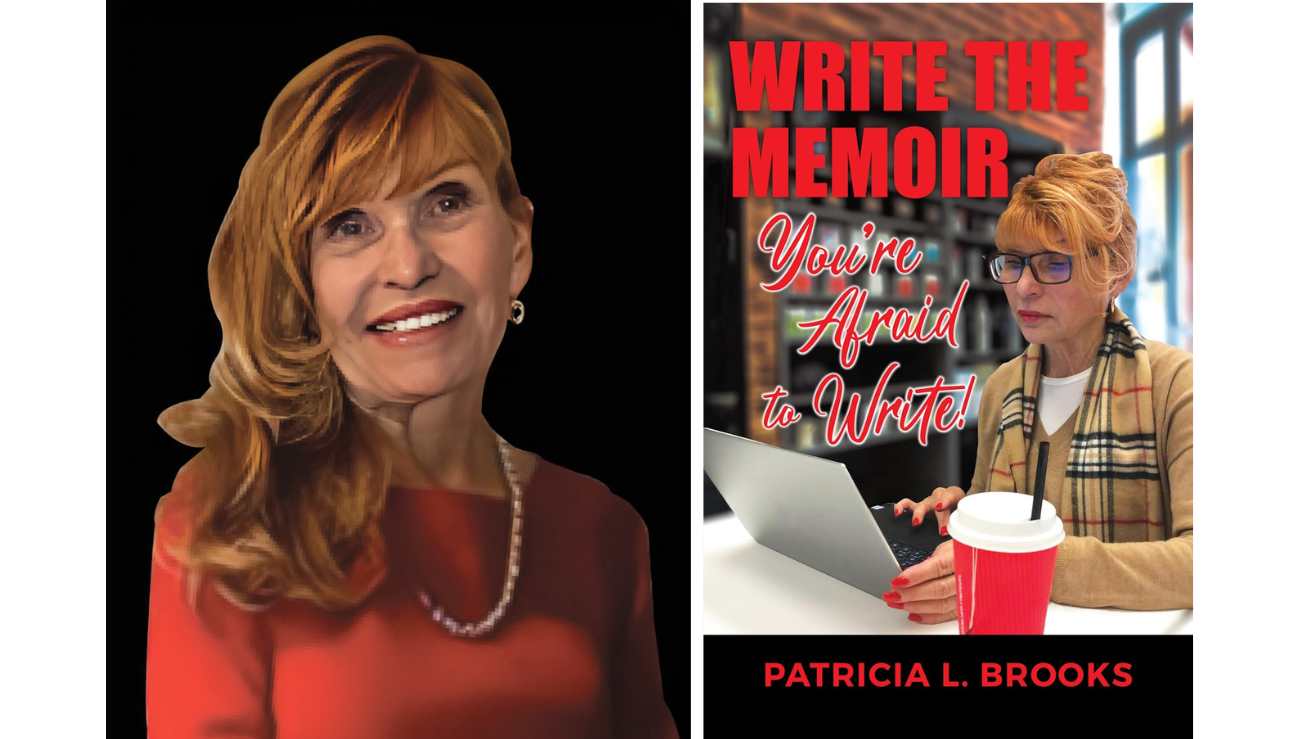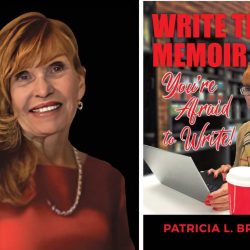
FROM MEMORY TO MEMOIR: PRACTICAL ADVICE FROM A MASTER TEACHER
Meet Patricia L. Brooks, a memoirist, publisher, and educator who has dedicated the past two decades of her life to helping writers tell their truth with courage and clarity. The author of three personal memoirs and a newly released guide,Write the Memoir You’re Afraid to Write, Patricia brings both heart and expertise to the art of personal storytelling.
As president of Brooks Goldmann Publishing and the Scottsdale Society of Women Writers, and a seasoned instructor at Arizona State University, she’s helped countless writers turn memories into meaningful narratives.
In this exclusive interview, Patricia shares practical and heartfelt advice for memoir writers, emphasizing the importance of emotional connection, authentic voice, and thematic focus. She dispels the myth that memoir equals autobiography, and encourages writers to center their stories around a pivotal life event. Her guidance includes tips on mind-mapping structure, capturing ideas in a journal, using critique groups for honest feedback, and writing with “fierce abandon.” Above all, Patricia reminds us that telling your truth—however difficult—is at the heart of compelling memoir.
A.G. Billig: What do you believe makes a memoir truly compelling for readers?
Patricia L. Brooks: A memoir is truly compelling if it includes both dialogue and feelings/emotions. If those things are lacking, there is no connection with the reader. It should not just be a documentation of events. It should be read like a personal reflection on the theme, with solutions.
A.G. Billig: What’s the biggest misconception people have about writing memoirs?
Patricia L. Brooks: The biggest misconception is that they are writing their life story or autobiography, that is not memoir. Memoir is about a specific event or experience that is a standout time in their life, good or bad. One that the reader can learn from or looks for in memoir. It should be a big enough part of your story to be a theme for at least twelve or so chapters.
A.G. Billig: What advice would you give to someone struggling to decide which parts of their life story to include—and what to leave out?
Patricia L. Brooks: If the writer is struggling with content, I recommend they decide on the theme or the core of the trunk of a tree, ‘mind-mapping” and then work on the branches or the threads of the memoir to develop the story. I do not recommend leaving out the difficult parts if they are necessary to tell the story. I also do not recommend that they be frivolous with their topic theme or the threads, respect the reader. Give the reader good solid information and details. The readers want to learn from you on your subject and understand it, they do like to be entertained, but not offended or bored. It is a fine line and a personal decision.
A.G. Billig: How can memoir writers find and refine their authentic voice on the page?
Patricia L. Brooks: You can refine and find your authentic voice by writing the way you talk. Do a rough draft nonstop with fierce abandon. Read it aloud the second time and adjust, then let it sit for a short time and read it again. You will hear yourself. Read other memoirs to understand the art of writing a memoir, but do not attempt to take another voice. It will not be authentic, and you will be found out. Honor your voice as it is now.
A.G. Billig: What are some ethical considerations memoirists should keep in mind when writing about real people and events?
Patricia L. Brooks: I tell my clients or students to follow their heart and good consciousness, and they will not be sued for libel. I also say talk to an intellectual property attorney if you have a lot of questions or concerns. I did not name names in my first book and in the second two I used only first names. I believe these are your experiences more than the subjects and you have the right to tell your truth. In the memoir world, truth is more interesting than fiction. If you have a real concern, consult the person or a writing partner, but do what you believe is best for you and the story.
A.G. Billig: What’s your process for turning raw memories into a narrative arc with momentum and emotional payoff?
Patricia L. Brooks: I believe good storytelling allows for turning raw memories into an emotional payoff. I have taken some fiction writing classes to understand how they are done, but not to write a memoir in that format. I do believe we need dialogue and narrative, conflict and solutions, and opportunities to give the reader what they are looking for, or close to it. Once one seeks memories on a part of their life, more will follow. It is also critical to capture every idea in a journal and refer back to it, but not to necessarily use all the ideas. Prioritize.
A.G. Billig: What are common mistakes first-time memoir writers make—and how can they avoid them?
Patricia L. Brooks: The most common to me is documenting a lot of what is not getting to the point of the story or the theme of the memoir. Also, many hang on to something they think is important and do not see the big picture of the memoir, what is really interesting to others and should be told. This can be avoided by being realistic on what will interest the reader, and what is your story. Being in a critique group and getting feedback each month on a chapter is invaluable. I have written all my books with the help of my critique group for the past 20 years; I would do it no other way. If that is not available, find a writing partner in your genre, not an editor but a proofreader.
A.G. Billig: How has teaching memoir writing influenced your own writing process and perspective on personal storytelling?
Patricia L. Brooks: It’s always said we teach to learn, and we teach to teach. I have learned a lot in the past 20 years teaching memoir writing at libraries, for community groups and at the university’s writing center. Many of the students bring their creativity freely and that helps the learning for everyone in the room. When I teach I do a talk for 20-30 minutes and then open it up for questions, they are invaluable. Secondly, we always do one or two activities to again bring ideas to the table. I enjoy hearing from the students as much as they enjoy hearing from me and the others.
A.G. Billig: How can authors reach you?
Patricia L. Brooks: I can be reached at patricia@plbrooks.com or text 480-250-5556 or www.brooksgoldmannpublishing.com




